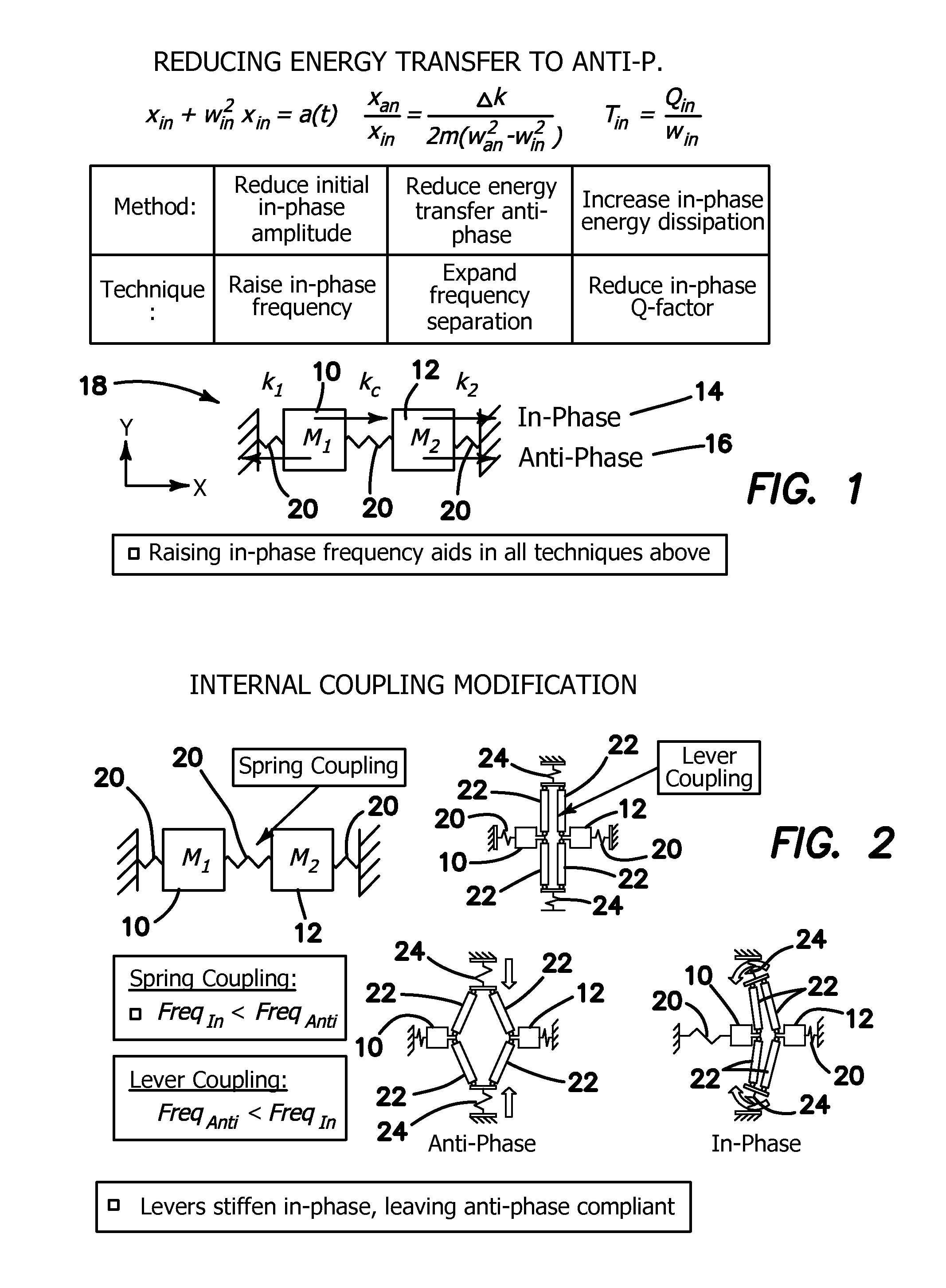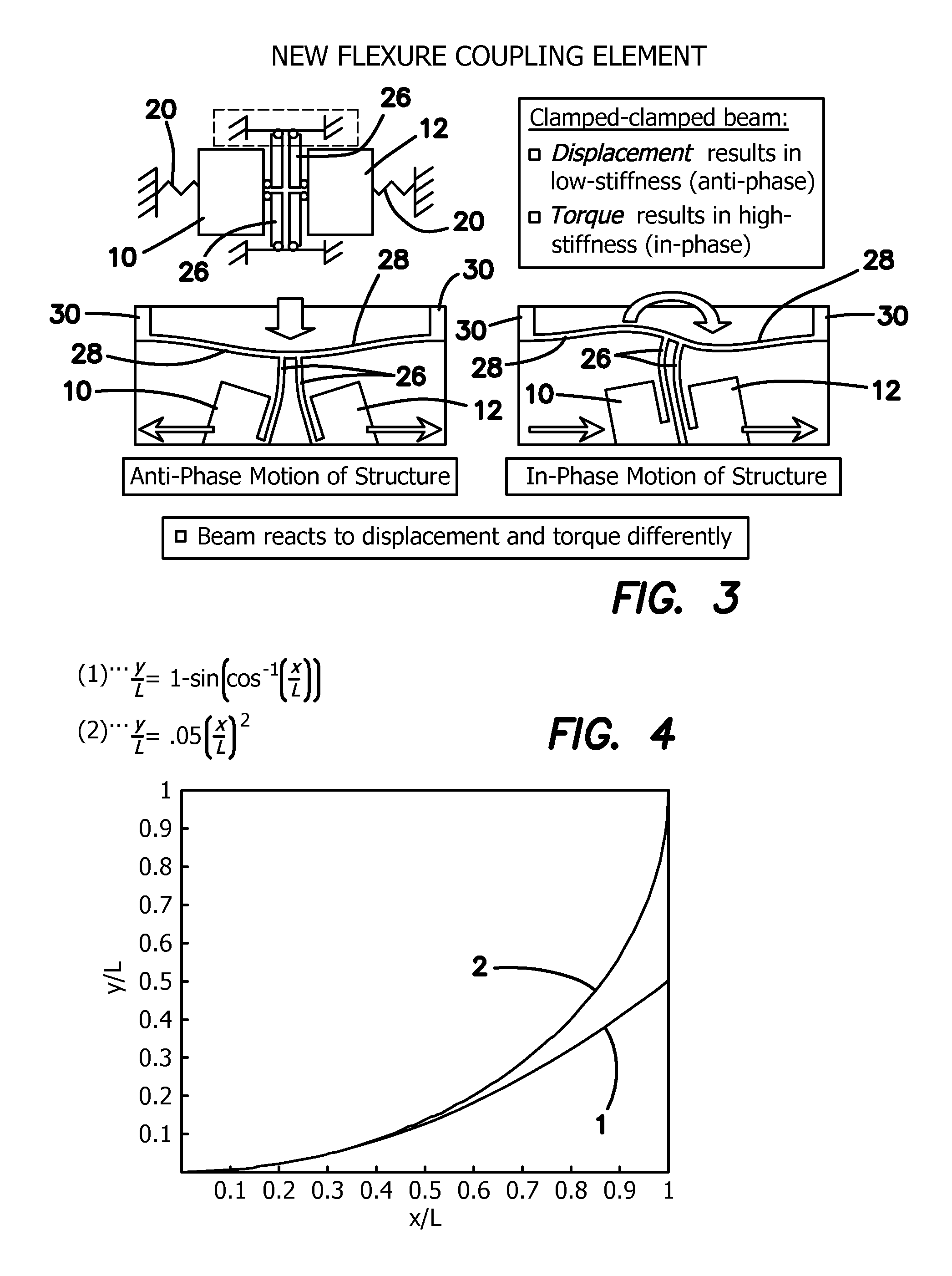Lever mechanisms for anti-phase mode isolation in MEMS tuning-fork structures
a technology of phase mode isolation and latch mechanism, which is applied in the direction of speed measurement using gyroscopic effects, turn-sensitive devices, instruments, etc., can solve the problems of less likely to be excited, force within the beam to produce a positive frequency drift with increasing temperature, etc., to reduce energy transfer, reduce g-sensitivity, and create a large frequency separation
- Summary
- Abstract
- Description
- Claims
- Application Information
AI Technical Summary
Benefits of technology
Problems solved by technology
Method used
Image
Examples
Embodiment Construction
[0050]The illustrated embodiments of the invention improve the design of tuning-fork structures. Generally speaking, tuning-forks are symmetric resonators that are operated using anti-phase motion. They consist of at least two masses or tines 10, 12, and are each driven independently with equal magnitude and opposite directional force as shown in FIG. 1. These masses or tines 10, 12 inherently have more than one mode of resonance, namely an anti-phase mode 16, as well as an in-phase mode 14, where both masses 10, 12 displace in the same direction. It is the in-phase mode 14, which we attempt to avoid with the anti-phase resonance because it is sensitive to external acceleration, and dissipates energy through the anchors of the structure (not shown) due to unbalanced linear momentum, thus lowering Q-factor. Both of these effects are avoided with an ideal anti-phase motion. These types of masses or tines 10, 12 are commonly used for many types of vibratory MEMS devices, including reso...
PUM
 Login to View More
Login to View More Abstract
Description
Claims
Application Information
 Login to View More
Login to View More - R&D
- Intellectual Property
- Life Sciences
- Materials
- Tech Scout
- Unparalleled Data Quality
- Higher Quality Content
- 60% Fewer Hallucinations
Browse by: Latest US Patents, China's latest patents, Technical Efficacy Thesaurus, Application Domain, Technology Topic, Popular Technical Reports.
© 2025 PatSnap. All rights reserved.Legal|Privacy policy|Modern Slavery Act Transparency Statement|Sitemap|About US| Contact US: help@patsnap.com



